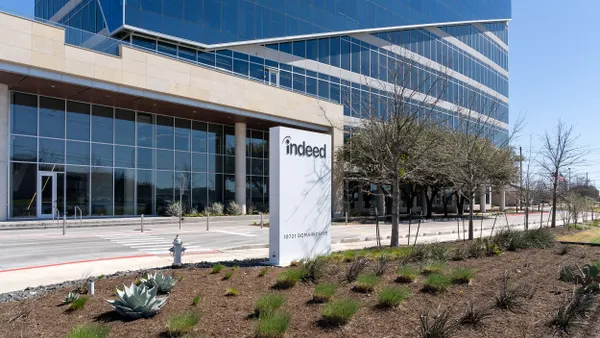The U.S. has 78 million hourly employees. They represent 59% of the population. But despite these powerful statistics, Snagajob, the online hourly marketplace, found that hourly employees have fewer resources for finding jobs and advancing their careers than salaried workers.
Snagajob set out to change that. It partnered with career social media site LinkedIn to find out what motivates and fulfills hourly employees, and provide employers with data to help hourly workers grow professionally.
“We live and breathe the hourly worker experience, and through our ongoing research and daily engagement with workers, we saw that there was a real need for resources to guide them through their employment journey,” Snagajob CEO Peter Harrison told HR Dive. Snagajob has 75 million registered members with access to more than 300,000 employers.
The company learned from hourly workers that most resources focused on salaried workers, while resources for hourly employees focused on knowledge workers.
Until now, says Harrison, there was little insightful information available for hourly workers, such as how many applications should they send out, which industries hire the fastest or what skills can help them get promoted.
“We thought it was important to determine patterns that might be helpful for both workers and employers,” says Harrison, explaining the study's purpose. He adds that the goal was to help connect people to jobs that would be fulfilling and engaging, and lead to the fastest path towards advancement.
To conduct the study, Snagajob analyzed more than 120 million job applications that 20 million hourly employees sent to its top 142 employers. The study gathered data from 2013 to 2016.
71% of hourlies are under 30
Snagajob and LinkedIn started the research on hourly workers by studying the basic demographics. They found that 71% of hourly workers are under 30 and at least 40% are in their 20s. This finding wasn’t surprising; many young adults take hourly jobs as an entry into the workforce, to pay the rent on their first apartment or to tackle college debt.
Among other hourly workers:
- 13% are in their 30s.
- 8% are in their 40s.
- 8% are 50 or older.
15% of hourlies over 30 have B.A. degrees
Researchers expected older hourly employees to have more education than young hourlies. But they didn’t expect 45% of hourlies to have a post-secondary certificate or degree. In fact, half of the hourly workers over 30 have degrees, 15% of which have a bachelor’s.
The educational breakdown for hourly employees shows that:
- 16% earned certificates
- 14% have associate’s degrees
- 12% hold B.A.’s
- 3% have Ph.D.’s
More hourlies are studying IT and engineering
Snagajob wanted to know what hourly employees were studying to earn advanced degrees. Business topped the list (31%), followed by healthcare (22%). But more hourly employees were studying IT and engineering (19%).
Researchers conclude that the demand for science, technology, engineering and math skills -- and the higher wages they command -- are choice fields for hourly workers.
Hiring speed matters to hourlies
Hourlies consider three things when job-hunting: speed, engagement and the number of applications to send out.
How quickly employers or industries hire can be critical for financially strapped job hunters. The survey found that, on average, restaurants hire within 27 days of receiving an application versus 33 days for retailers.
The top three fastest hiring establishments are…
- Sandwich shops – 17 days
- Sports retailers – 24 days
- Casual dining establishments – 25 days
Applicants who want job satisfaction consider employee engagement essential. Snagajob looked at how long hourlies stayed with an employer as a sign of engagement. Telecommunications companies, casual dining establishments and grocery stores provide the most engagement. Sports retailers, beverage vendors and fast-food restaurants provided the least.
To increase their chances of landing a job, hourly jobseekers consider how many applications to send out. Snagajob found that, indeed, workers who get hired send out twice as many applications as other jobseekers.
Beverage retailers and furniture stores promote the fastest
Researchers also gauged how quickly employers typically promote workers. Survey results show that beverage retailers, craft businesses and furniture stores promote hourly workers the fastest, typically within two years. Employers in telecommunications and casual dining are the slowest to promote, taking, on average, more than three years.
Snagajob says that how long it takes to be promoted matters because advancement means higher pay and more responsibility, which, in turn, can lead to more promotions.
“Our hope is that this data helps [employers] see what motivates and fulfills workers, so they can find ways to provide that engagement to employees wherever possible,” says Harrison. “We feel both employers and workers are best served when the employer tries to understand the worker’s needs and provides a path for growth."












